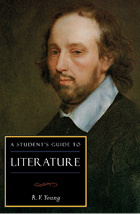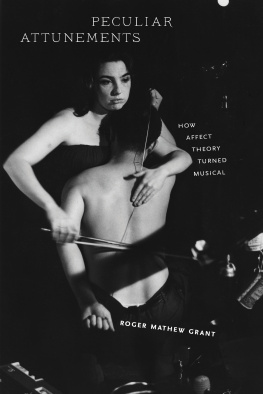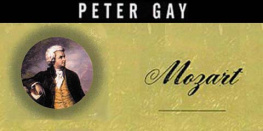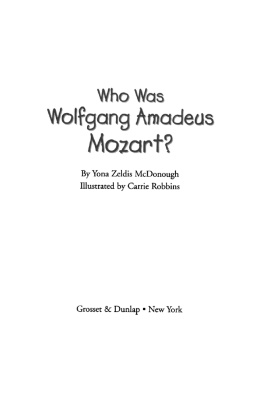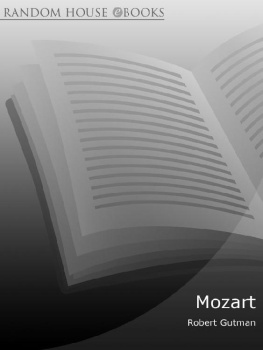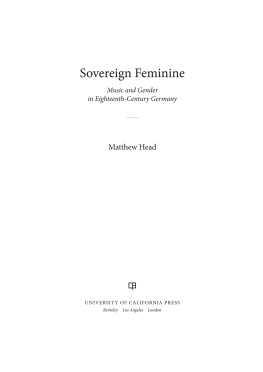Abbreviations
The following abbreviations are used in endnotes to refer to music available in standard complete editions and other collections. Several examples are also available online.
| DmV | Drammaturgia musicale Veneta, Milan: Ricordi, 1983. |
| DT | Denkmler Tonkunst in sterreich, Graz: Akademische Druck- und Verlagsanstalt, 1959 . |
| ECNRS | Edition Centre National de la Recherche Scientifique, Paris: Centre national de la recherche scientifique, 1987. |
| EECM | Early English Church Music. London: Stainer and Bell, 1963. |
| FOSEC | French Opera in the Seventeenth and Eighteenth Centuries, New York: Pendragon Press, 1984 . |
| GHS | German Handel Society, Ridgewood: Gregg Press, 1965. |
| GIO | Garland Italian Opera, New York and London: Garland, 1977 |
| GSW | Gluck Smtliche Werke, Kassel: Brenreiter, 1951 . |
| HHA | Hallische Handel Ausgabe, Kassel: Brenreiter, 1955 . |
| HPMSO | Harvard Publications in Music: Scarlatti Operas, Cambridge: Harvard University Press, 1975 . |
| JCBCW | Johann Christian Bach Collected Works, New York: Garland, 1985 . |
| JHW | Joseph Haydn Werke, Munich: G. Henle Verlag, 1968 . |
| KASS | Kritische Ausgabe Smtlicher Symphonien, Vienna: Universal Edition, 1963-68. |
| MB | Musica Britannica, London: Stainer and Bell, 1951 . |
| MMS | Monumenta Musicae Svecicae, Stockholm: Almquist & Wiksell, 1960. |
| NMA | Neue Mozart Ausgabe smtlicher Werke, Kassel: Brenreiter, 1955 . |
| OCJBL | Oeuvres Complte de J. B. Lully, New York: Broude Brothers, 1966-72. |
| PSE | Purcell Society Edition, London: Stainer & Bell, 1878 . |
| SKB | Sddeutscher Kirchenmusik in Barock, Altotting: Alfred Coppenrath, 1979. |
| TMW | Telemann Musikalische Werke, Kassel: Brenreiter, 1950 . |
About the author
Clive McClelland is Principal Teaching Fellow at the University of Leeds, West Yorkshire. After graduating from Birmingham University in 1981, Clive was a schoolteacher for several years, and has taught in a comprehensive school in Essex, an independent school in Harrogate and a sixth form college in Leeds. He taught part-time at Leeds University while completing his PhD thesis and is now a full-time member of staff. He specialises in harmony, counterpoint and analysis and his interest in historically-informed performance is pursued principally through his role as choral director of Leeds Baroque.
His publications include: Haydn and the Elements: Symbolic references in the oratorios, Haydn Society Journal 15 (1995), 18-27; the entry on Ombra in The New Grove Dictionary of Music and Musicians ed. Stanley Sadie and John Tyrrell (London: MacMillan, 2000) vol. xviii, 407-8; Death and the Composer: The context of Schuberts Supernatural Lieder, in ed. B. Newbould Schubert the Progressive: History, Performance Practice and Analysis (Aldershot: Ashgate, 2003); Shadows of the evening: New light on Elgars dark saying, Musical Times vol. 148 no. 1901 (Winter 2007), 43-48. He is contributing a chapter to the forthcoming The Oxford Handbook of Topic Theory, edited by Danuta Mirka, on ombra in relation to Sturm und Drang.
Appendix A
A taxonomy of ombra characteristics
| General features | high style, sombre, sustained, not quasi-improvisatory |
| Tempo | slow or moderate, never fast |
| Tonality | flat keys (especially minor keys) occasionally remote, shifting, unusual modulations |
| Harmony | surprise progressions, bold, chromatic especially diminished 7ths, sometimes Neapolitan and augmented sixths |
| Melody | exclamatory, often fragmented, sometimes augmented/diminished leaps, occasionally narrow intervals contrasting with wide leaps, monotones/triadic lines for oracles and invocations |
| Bass | chromatic stepwise movement, descending tetrachord, sometimes augmented/diminished leaps, repeated notes, pedals, ostinato |
| Figuration | motivic repetition (including sigh motifs), tremolo effects, sometimes rising and falling scales |
| Rhythm | restless motion, syncopation, majestic or ponderous dotted rhythms, sometimes dactyls/versi sdruccioli, pauses |
| Texture | sudden contrasts, often dense, sometimes lines doubled in octaves, rarely imitative |
| Dynamics | strong contrasts, sudden outbursts, crescendo effects, unexpected silence |
| Instrumentation | unusual, low tessitura, dark timbre, especially trombones |
Appendix B
Correspondences between Burkes sources of the Sublime and ombra characteristics
| Terror | Restless rhythmic movement and tremolando effects |
| Obscurity | Shifting harmony and chromaticism |
| Power | Loud, full texture, strong dynamic contrasts |
| Privation | Silences and pauses |
| Vastness | Repeated notes, stepwise progressions, ostinati |
| Difficulty | Complex rhythms and harmonies |
| Magnificence | High style, dotted rhythms |
| Loudness | Loud dynamics |
| Suddenness | Sforzati, sudden dynamic contrasts, surprise chords |
| Intermitting | Low sounds, dark timbres, pedal notes |
Bibliography
Abert, Hermann. Niccol Jommelli als Opernkomponist. Halle: M. Niemeyer, 1908.
. Mozarts Don Giovanni. Trans. Peter Gellhorn. London: Da Capo Press, 1976.
Adams, Stan R. The Use of Trombones to Depict Infernal and Horrendous Scenes in Three Representative Operas. Journal of the Internatinal Trombone Association, vol. 9 (1981), 1620.
Agawu, V. Kofi. Playing with Signs. Princeton: Princeton University Press, 1991.
. Topic Theory: Achievement, Critique, Prospects. In Passagen IMS Kongress Zrich 2007. Edited by Laurenz Ltteken and Hans-Joachim Hinrichsen, 3869. Kassel: Brenreiter, 2008.
Alison, Archibald. Essays on the Nature and Principles of Taste. London & Edinburgh, 1790, repr. Olms: G. Hildesheim, 1968.
Allanbrook, Wye J. Rhythmic Gesture in Mozart. Chicago: University of Chicago Press, 1983.
Anderson, Emily, ed. The Letters of Mozart and his Family. 3d ed. London: Palgrave Macmillan, 1985.
Angiolini, Gasparo. Lettere di Gasparo Angiolini a Monsieur Noverre sopra i balli pantomimi. Milan: G. B. Bianchi, 1773.
Anthony, James. French Baroque Music from Beaujoyeulx to Rameau. Portland: Amadeus Press, 1997.
Ashfield, Andrew, and Peter de Bolla, eds. The Sublime: A Reader in British Eighteenth-Century Aesthetic Theory. Cambridge: Cambridge University Press, 1996.
Baillie, John. An Essay on the Sublime. London: for R. Dodsley, 1747.
Baines, Anthony C., Arnold Myers, and Trevor Herbert. Trombone. The New Grove Dictionary of Music and Musicians. Edited by Stanley Sadie and John Tyrrell. London: Macmillan, 2001. vol. xxv: 762773.
Baker, Felicity. The Figures of Hell in the Don Giovanni libretto. In Words about Mozart: Essays in Honour of Stanley Sadie. Edited by D. Link and J. Nagley, 77106. Woodbridge: Boydell Press, 2005.


